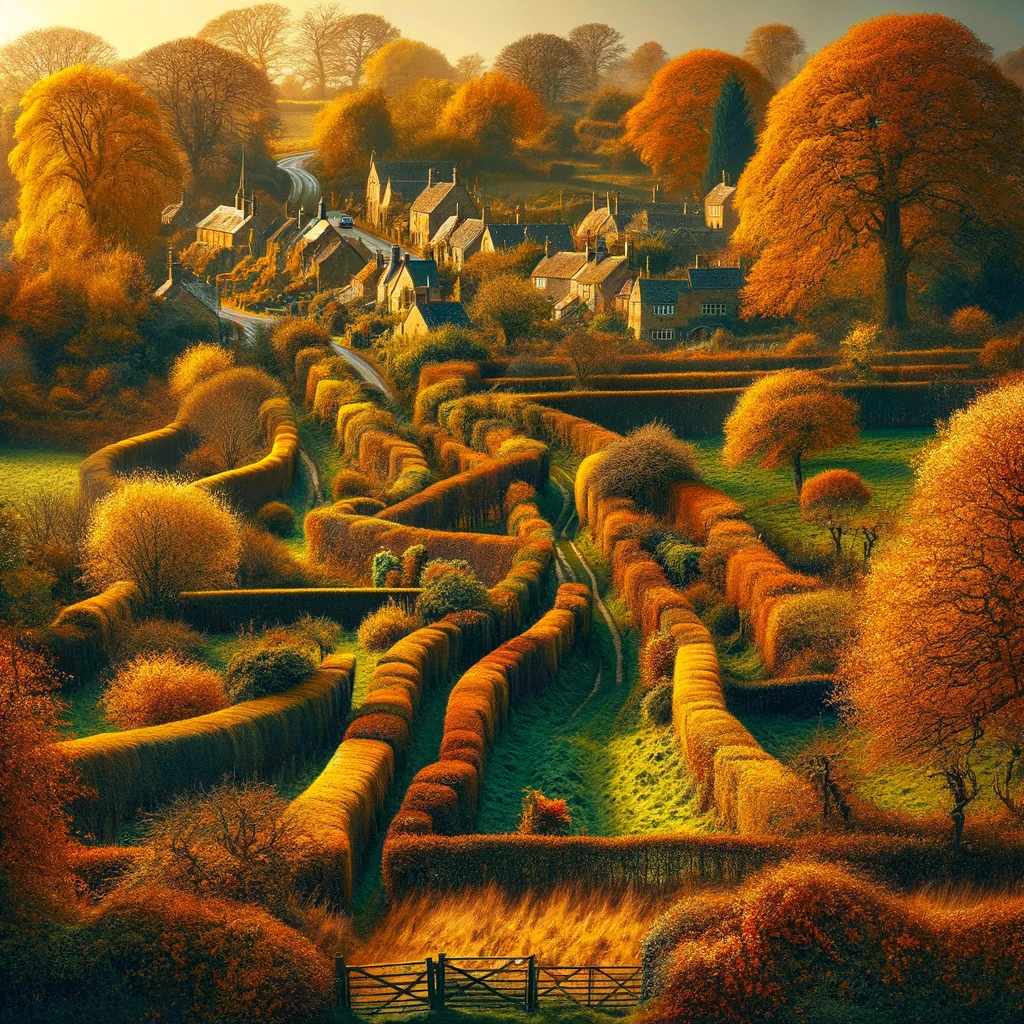The Wakhi shepherdesses of Pakistan have played a vital role in their community for centuries. These women have trekked to remote mountain pastures to graze their flocks, generating income that has helped transform their community by funding healthcare, education, and infrastructure development. However, their way of life is dying out, and there are now only seven shepherdesses left. BBC 100 Women joined them on one of their last trips to the pastures.
The journey to the Pamir pastures is treacherous, with steep mountain trails and the constant threat of landslides. The shepherdesses whistle and holler at their animals to keep them on the narrow paths. In the past, dozens of shepherdesses would make this trek every summer, but now it takes five days instead of three. The elderly shepherdesses are always ahead of the rest of the group as they are acclimated to the altitude.
The shepherdesses recall the hardships they faced in the past, when they didn’t have proper clothing and shoes for the journey. They used to wear simple robes and walk on ice without shoes. They have also faced personal hardships, such as the lack of healthcare facilities in the mountains, resulting in the loss of children. Despite these challenges, they have become successful businesswomen, collecting milk from their animals to make dairy products and trading them for goods and services.
The combination of the women’s shepherding and the men’s farming has brought significant changes to the community. The income generated by the shepherdesses helped fund the construction of the only road out of the valley, improving access to healthcare, education, and new opportunities. The younger generation has embraced these opportunities, pursuing education and starting businesses in tourism and hospitality.
While the shepherdesses are proud of their children’s achievements, there is sadness that the trips to the pastures are no longer viable. Shepherding is more than just a job for them; it is a deep connection to the land and a cherished part of their heritage. As one shepherdess expresses her desire to be buried next to her children in the pastures, it is clear that their bond with the land is profound.
The story of the Wakhi shepherdesses highlights the unique and disappearing way of life in Pakistan’s mountainous regions. Their resilience, hard work, and contribution to their community serve as an inspiration, and their story sheds light on the challenges faced by rural communities in the face of modernization and changing lifestyles.
Original news source: The last of their kind: The unique life of Pakistan’s Wakhi shepherdesses (BBC)
Listen
Slow
Normal
Fast
Group or Classroom Activities
Warm-up Activities:
– News Summary
Instructions: Divide the class into small groups. Give each group a few minutes to read the article. Then, ask each group to create a summary of the article, highlighting the main points and key details. Afterward, have each group share their summaries with the class.
– Opinion Poll
Instructions: Create a list of questions related to the article. For example: “Do you think the government should do more to support traditional industries in rural areas?” or “Should the younger generation prioritize education and business opportunities over traditional ways of life?” Divide the class into pairs or small groups and have them discuss the questions and share their opinions. Afterwards, conduct a class-wide poll to see the general consensus on each question.
– Sketch It
Instructions: Choose a scene or moment from the article and have the students sketch it on a piece of paper. Encourage them to include as many details as possible. Afterward, have each student share their sketch with a partner and explain what they drew and why.
– Vocabulary Pictionary
Instructions: Choose 10-15 key vocabulary words from the article and write them on separate slips of paper. Divide the class into two teams. One student from each team will take turns picking a word and drawing it on the board without using any letters or numbers. The team must guess the word within a certain time limit. If they are unable to guess, the other team has a chance to steal.
– Future Predictions
Instructions: In pairs or small groups, have the students discuss and make predictions about the future of the Wakhi shepherdesses and their community. For example, “What do you think will happen to the shepherdesses’ way of life in the next 10 years?” or “How do you think the community will continue to evolve and adapt to modernization?” Afterward, have each group share their predictions with the class and facilitate a discussion.
Comprehension Questions:
1. How have the Wakhi shepherdesses helped transform their community?
2. What are some of the challenges the shepherdesses face on their journey to the pastures?
3. How have the shepherdesses adapted to the altitude of the mountains?
4. What hardships did the shepherdesses face in the past?
5. How have the shepherdesses been able to generate income?
6. What changes have occurred in the community as a result of the shepherdesses’ work?
7. Why do the shepherdesses feel sadness about the trips to the pastures no longer being viable?
8. What does the story of the Wakhi shepherdesses highlight about rural communities in Pakistan’s mountainous regions?
Go to answers ⇩
Listen and Fill in the Gaps:
The Wakhi shepherdesses of Pakistan have played a vital role in their community for centuries. These women have trekked to remote mountain pastures to graze their flocks, generating income that has helped (1)______ their community by funding healthcare, education, and infrastructure development. However, their way of life is (2)______ out, and there are now only seven shepherdesses left. BBC 100 Women joined them on one of their last trips to the pastures.
The journey to the Pamir pastures is treacherous, with steep mountain (3)______ and the constant threat of landslides. The shepherdesses whistle and (4)______ at their animals to keep them on the narrow paths. In the past, dozens of (5)______ would make this trek every summer, but now it takes five days instead of three. The elderly shepherdesses are always ahead of the rest of the group as they are acclimated to the (6)______.
The shepherdesses recall the hardships they faced in the past, when they didn’t have proper clothing and shoes for the journey. They used to wear simple (7)______ and walk on ice without shoes. They have also faced personal hardships, such as the lack of healthcare facilities in the mountains, (8)______ in the loss of children. Despite these challenges, they have become successful businesswomen, (9)______ milk from their animals to make dairy products and trading them for goods and services.
The combination of the women’s (10)______ and the men’s farming has brought significant changes to the community. The income generated by the shepherdesses helped fund the construction of the only road out of the valley, improving access to (11)______, education, and new opportunities. The younger generation has embraced these opportunities, pursuing education and starting businesses in tourism and (12)______.
While the shepherdesses are proud of their children’s achievements, there is sadness that the trips to the pastures are no longer viable. (13)______ is more than just a job for them; it is a deep connection to the land and a cherished part of their heritage. As one (14)______ expresses her desire to be buried next to her children in the pastures, it is clear that their bond with the land is profound.
The story of the Wakhi shepherdesses (15)______ the unique and disappearing way of life in Pakistan’s mountainous regions. Their resilience, hard work, and contribution to their community serve as an (16)______, and their story sheds light on the challenges faced by rural communities in the face of modernization and changing lifestyles.
Go to answers ⇩
Discussion Questions:
Students can ask a partner these questions, or discuss them as a group.
1. What is the role of the Wakhi shepherdesses in their community?
2. How would you feel if your way of life was dying out?
3. Do you think it is important to preserve traditional ways of life? Why or why not?
4. What challenges do you think the shepherdesses face on their journey to the pastures?
5. How do you think the shepherdesses feel about the changes in their community brought about by their income generation?
6. What do you think are some of the personal hardships the shepherdesses have faced?
7. Do you think it is important for communities to have access to healthcare and education? Why or why not?
8. How do you think the younger generation in the community has benefited from the income generated by the shepherdesses?
9. What do you think it means for the shepherdesses to have a deep connection to the land?
10. How do you think the shepherdesses feel about the trips to the pastures no longer being viable?
11. Do you think it is important for people to preserve their heritage? Why or why not?
12. How do you think the shepherdesses’ story can serve as an inspiration?
13. What challenges do you think rural communities face in the face of modernization and changing lifestyles?
14. How do you think the disappearance of traditional ways of life impacts a community?
15. Do you think it is possible to balance modernization and the preservation of traditional ways of life? Why or why not?
Individual Activities
Vocabulary Meanings:
Match each word to its meaning.
Words:
1. shepherdesses
2. community
3. income
4. healthcare
5. education
6. infrastructure
7. pastures
8. challenges
Meanings:
(a) The basic physical and organizational structures and facilities
(b) Land covered in grass or other vegetation for grazing animals
(c) Difficulties or obstacles that need to be overcome
(d) Women who tend to and care for sheep
(e) A group of people living in the same area
(f) Medical services and treatment
(g) Money earned from work or investments
(h) The process of acquiring knowledge and skills
Go to answers ⇩
Multiple Choice Questions:
1. What is the main source of income for the Wakhi shepherdesses?
(a) Trading goods and services
(b) Farming
(c) Grazing their flocks
(d) Tourism and hospitality
2. How many shepherdesses are left in the community?
(a) Dozens
(b) Hundreds
(c) Seven
(d) Thousands
3. What is the biggest challenge the shepherdesses face on their journey to the pastures?
(a) Steep mountain trails
(b) Lack of proper clothing
(c) Landslides
(d) Lack of healthcare facilities
4. How long does the journey to the pastures take now compared to the past?
(a) Three days instead of five
(b) Five days instead of three
(c) One day instead of three
(d) Three days instead of one
5. What have the shepherdesses used the income from their shepherding for?
(a) Funding healthcare, education, and infrastructure development
(b) Starting businesses in tourism and hospitality
(c) Trading for goods and services
(d) Building roads in the valley
6. What has the combination of the women’s shepherding and the men’s farming brought to the community?
(a) Decreased income
(b) Significant changes
(c) Decreased access to healthcare and education
(d) Increased isolation
7. What do the shepherdesses feel about the trips to the pastures no longer being viable?
(a) Relief
(b) Indifference
(c) Excitement
(d) Sadness
8. What does the story of the Wakhi shepherdesses shed light on?
(a) Challenges faced by urban communities in the face of modernization
(b) Challenges faced by shepherdesses in other countries
(c) Challenges faced by men in the farming industry
(d) Challenges faced by rural communities in the face of modernization
Go to answers ⇩
True or False Questions:
1. There are currently more than seven shepherdesses left, indicating that their way of life is thriving.
2. The shepherdesses used to face hardships in the past, including lack of proper clothing and shoes for the journey.
3. The Wakhi shepherdesses of Pakistan have been a nonessential part of their community for centuries.
4. The journey to the Pamir pastures is treacherous, with steep mountain trails and the constant threat of landslides.
5. The combination of the women’s shepherding and the men’s farming has brought significant changes to the community, including the construction of the only road out of the valley.
6. The shepherdesses have a superficial connection to the land and view shepherding as just a job.
7. The elderly shepherdesses are always ahead of the rest of the group due to their acclimation to the altitude.
8. The shepherdesses have not helped transform their community by funding healthcare, education, and infrastructure development through their shepherding.
Go to answers ⇩
Write a Summary:
Write a summary of this news article in two sentences.
Check your writing now with the best free AI for English writing!
Writing Questions:
Answer the following questions. Write as much as you can for each answer.
Check your answers with our free English writing assistant!
1. How has the income generated by the shepherdesses helped transform their community?
2. What challenges have the shepherdesses faced in the past during their journeys to the pastures?
3. How have the shepherdesses become successful businesswomen?
4. How have the shepherdesses’ children embraced the opportunities brought about by their parents’ shepherding?
5. What does the story of the Wakhi shepherdesses reveal about the challenges faced by rural communities in Pakistan’s mountainous regions?
Answers
Comprehension Question Answers:
1. The Wakhi shepherdesses have helped transform their community by generating income through their shepherding activities. This income has funded healthcare, education, and infrastructure development.
2. Some of the challenges the shepherdesses face on their journey to the pastures include treacherous mountain trails, the constant threat of landslides, and the need to keep their animals on narrow paths.
3. The shepherdesses have adapted to the altitude of the mountains through acclimation. The elderly shepherdesses, who have been making the journey for years, are already accustomed to the altitude.
4. In the past, the shepherdesses faced hardships such as not having proper clothing and shoes for the journey. They used to wear simple robes and walk on ice without shoes.
5. The shepherdesses have been able to generate income by collecting milk from their animals and using it to make dairy products. They then trade these products for goods and services.
6. The income generated by the shepherdesses has brought significant changes to the community. It has funded the construction of the only road out of the valley, improving access to healthcare, education, and new opportunities. The younger generation has embraced these opportunities, pursuing education and starting businesses in tourism and hospitality.
7. The shepherdesses feel sadness about the trips to the pastures no longer being viable because shepherding is more than just a job for them. It is a deep connection to the land and a cherished part of their heritage. They have a profound bond with the land and wish to be buried next to their children in the pastures.
8. The story of the Wakhi shepherdesses highlights the unique and disappearing way of life in Pakistan’s mountainous regions. It shows the resilience, hard work, and contribution of rural communities. It also sheds light on the challenges faced by these communities in the face of modernization and changing lifestyles.
Go back to questions ⇧
Listen and Fill in the Gaps Answers:
(1) transform
(2) dying
(3) trails
(4) holler
(5) shepherdesses
(6) altitude
(7) robes
(8) resulting
(9) collecting
(10) shepherding
(11) healthcare
(12) hospitality
(13) Shepherding
(14) shepherdess
(15) highlights
(16) inspiration
Go back to questions ⇧
Vocabulary Meanings Answers:
1. shepherdesses
Answer: (d) Women who tend to and care for sheep
2. community
Answer: (e) A group of people living in the same area
3. income
Answer: (g) Money earned from work or investments
4. healthcare
Answer: (f) Medical services and treatment
5. education
Answer: (h) The process of acquiring knowledge and skills
6. infrastructure
Answer: (a) The basic physical and organizational structures and facilities
7. pastures
Answer: (b) Land covered in grass or other vegetation for grazing animals
8. challenges
Answer: (c) Difficulties or obstacles that need to be overcome
Go back to questions ⇧
Multiple Choice Answers:
1. What is the main source of income for the Wakhi shepherdesses?
Answer: (c) Grazing their flocks
2. How many shepherdesses are left in the community?
Answer: (c) Seven
3. What is the biggest challenge the shepherdesses face on their journey to the pastures?
Answer: (a) Steep mountain trails
4. How long does the journey to the pastures take now compared to the past?
Answer: (b) Five days instead of three
5. What have the shepherdesses used the income from their shepherding for?
Answer: (a) Funding healthcare, education, and infrastructure development
6. What has the combination of the women’s shepherding and the men’s farming brought to the community?
Answer: (b) Significant changes
7. What do the shepherdesses feel about the trips to the pastures no longer being viable?
Answer: (d) Sadness
8. What does the story of the Wakhi shepherdesses shed light on?
Answer: (d) Challenges faced by rural communities in the face of modernization
Go back to questions ⇧
True or False Answers:
1. There are currently more than seven shepherdesses left, indicating that their way of life is thriving. (Answer: False)
2. The shepherdesses used to face hardships in the past, including lack of proper clothing and shoes for the journey. (Answer: True)
3. The Wakhi shepherdesses of Pakistan have been a nonessential part of their community for centuries. (Answer: False)
4. The journey to the Pamir pastures is treacherous, with steep mountain trails and the constant threat of landslides. (Answer: True)
5. The combination of the women’s shepherding and the men’s farming has brought significant changes to the community, including the construction of the only road out of the valley. (Answer: True)
6. The shepherdesses have a superficial connection to the land and view shepherding as just a job. (Answer: False)
7. The elderly shepherdesses are always ahead of the rest of the group due to their acclimation to the altitude. (Answer: True)
8. The shepherdesses have not helped transform their community by funding healthcare, education, and infrastructure development through their shepherding. (Answer: False)
Go back to questions ⇧













